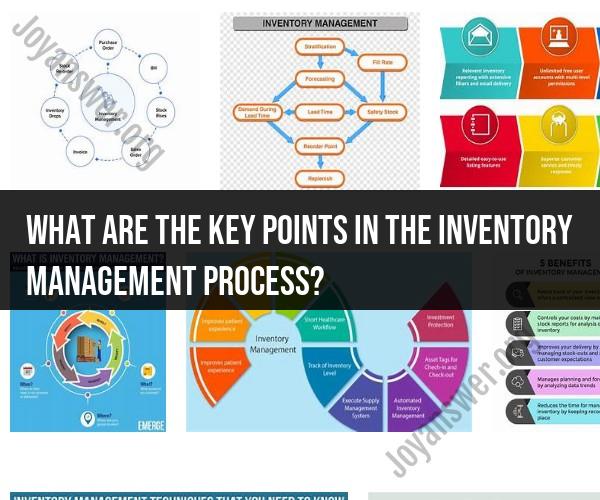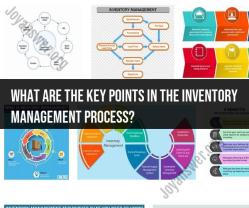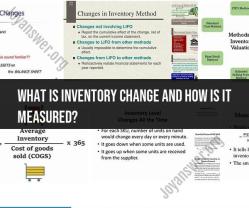What are the key points in the inventory management process?
Inventory management is a crucial aspect of supply chain and operations management. Effectively managing inventory helps organizations optimize costs, meet customer demand, and maintain efficient operations. Here are key points in the inventory management process:
Inventory Classification:
- Categorize inventory items based on criteria such as value, demand, and criticality. Common classification methods include ABC analysis (categorizing items as A, B, or C based on importance) and XYZ analysis (categorizing items by demand variability).
Inventory Planning:
- Forecast demand for each inventory item based on historical data, market trends, and customer orders. Use forecasting techniques to estimate future demand.
Ordering and Reordering:
- Determine optimal reorder points and order quantities for each item to avoid stockouts (running out of inventory) or overstock situations. This involves calculating safety stock levels and economic order quantities (EOQ).
Supplier Management:
- Maintain good relationships with suppliers to ensure timely deliveries and quality products. Negotiate favorable terms, lead times, and prices to optimize procurement.
Inventory Tracking:
- Implement inventory tracking systems, such as barcoding, RFID, or inventory management software, to monitor stock levels, shipments, and deliveries in real-time.
Stock Accuracy:
- Regularly conduct physical inventory counts or cycle counts to verify the accuracy of stock levels and identify discrepancies.
Safety Stock:
- Maintain safety stock to account for unexpected spikes in demand or supply disruptions. The level of safety stock should be determined by the desired service level.
ABC Analysis:
- Prioritize items based on their classification (A, B, or C) to allocate resources effectively. Class A items are typically the most critical and require more attention.
Inventory Turnover:
- Calculate inventory turnover ratios to assess how quickly inventory is moving. Higher turnover is often more desirable, as it indicates efficient inventory management.
Lead Time Management:
- Manage lead times effectively, considering the time it takes to reorder and receive inventory. Accurate lead time data is essential for setting reorder points.
Technology Integration:
- Integrate inventory management systems with other business processes, such as sales, purchasing, and production, for seamless data flow and decision-making.
Forecast Accuracy:
- Continuously improve forecasting accuracy by refining forecasting models, incorporating market intelligence, and adjusting forecasts based on actual demand.
Supplier Performance Evaluation:
- Evaluate supplier performance regularly, including on-time deliveries, product quality, and adherence to agreements. Address issues promptly to maintain a reliable supply chain.
Obsolete Inventory Management:
- Identify and manage obsolete or slow-moving inventory to free up capital and storage space. Consider discounts, liquidation, or alternative uses for such inventory.
Cost Control:
- Monitor inventory holding costs, including warehousing, insurance, and financing costs. Strive to minimize costs while meeting customer demand.
Continuous Improvement:
- Implement a culture of continuous improvement in inventory management, regularly reviewing and optimizing processes and procedures.
Demand Planning:
- Collaborate with sales and marketing teams to align demand forecasts with sales projections and promotions.
Performance Metrics:
- Establish key performance indicators (KPIs) to measure inventory performance, such as inventory turnover, fill rates, and order accuracy.
Strategic Inventory Management:
- Align inventory management with overall business strategies, considering factors like product lifecycles, seasonality, and market dynamics.
Sustainability Considerations:
- Consider sustainability goals when managing inventory, including reducing waste, energy consumption, and carbon footprint.
Effective inventory management requires a well-defined strategy, efficient processes, and the use of technology to optimize inventory levels while meeting customer demands and controlling costs. It is an ongoing process that requires regular monitoring and adjustments to maintain optimal performance.




